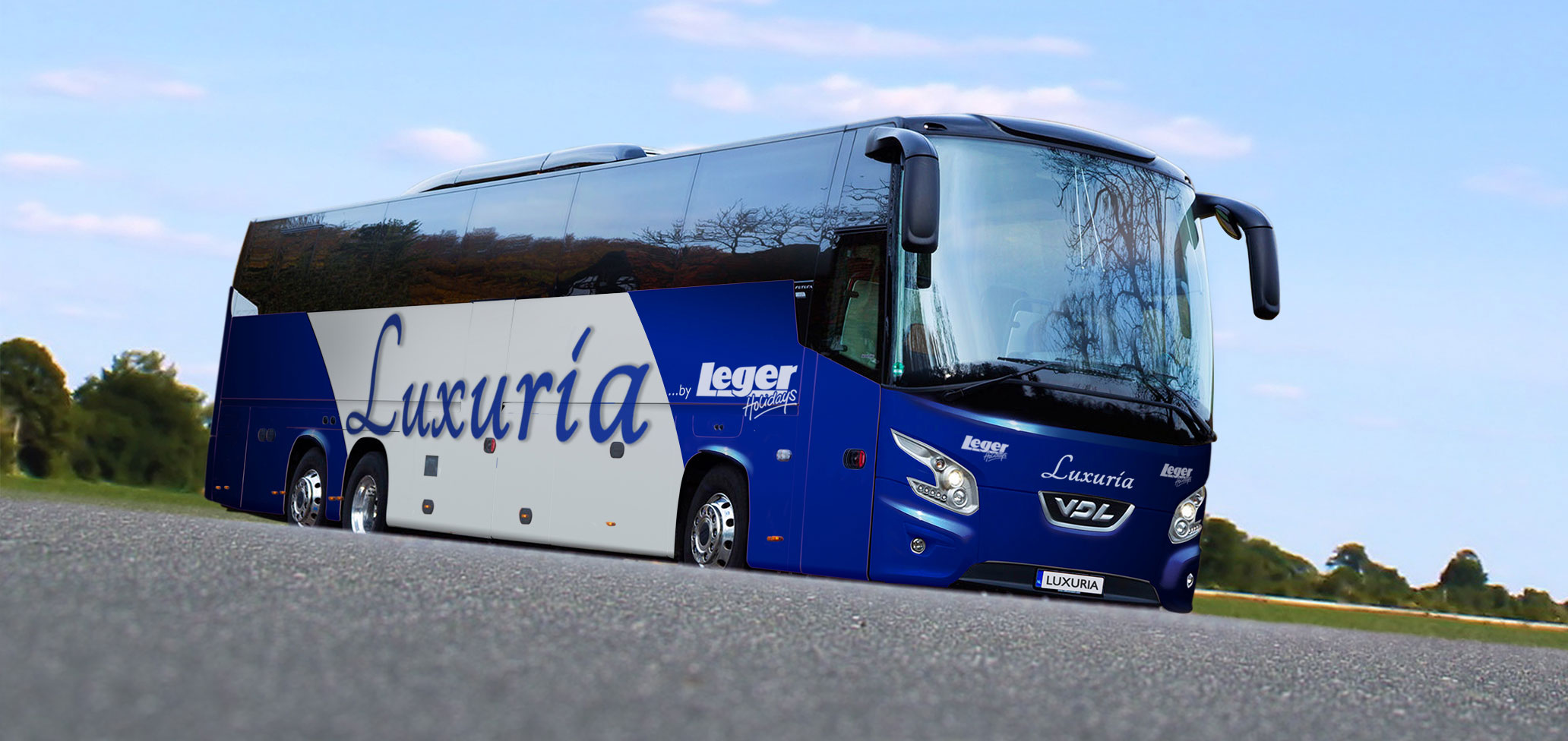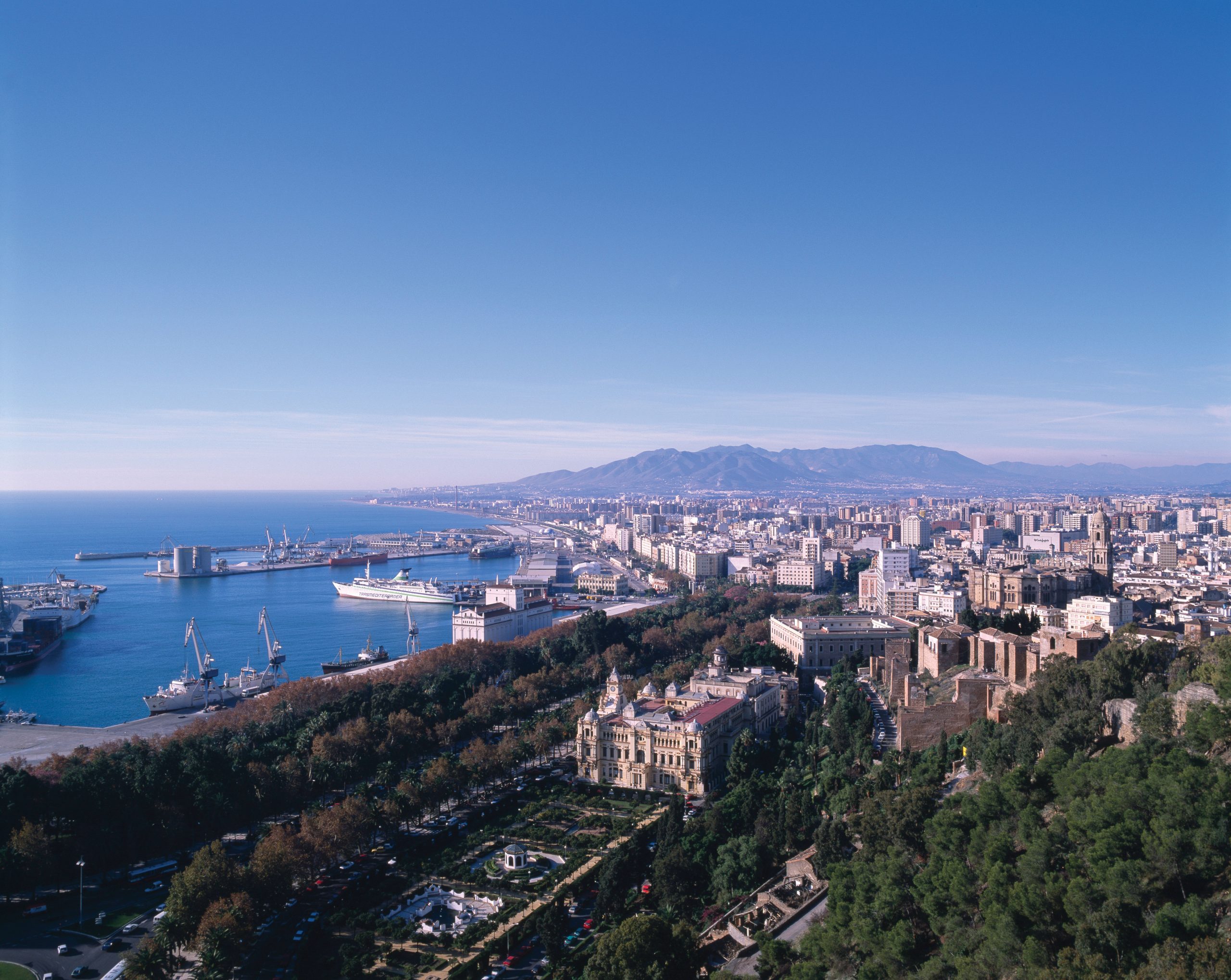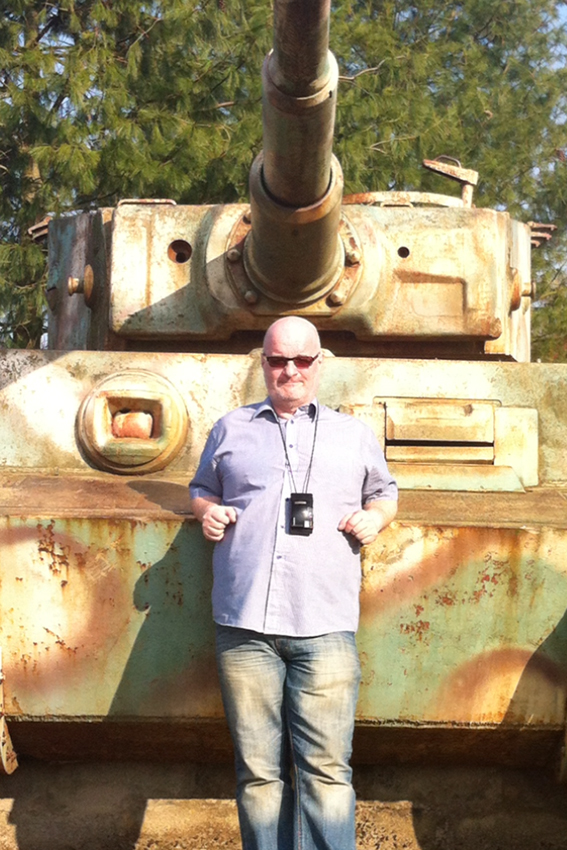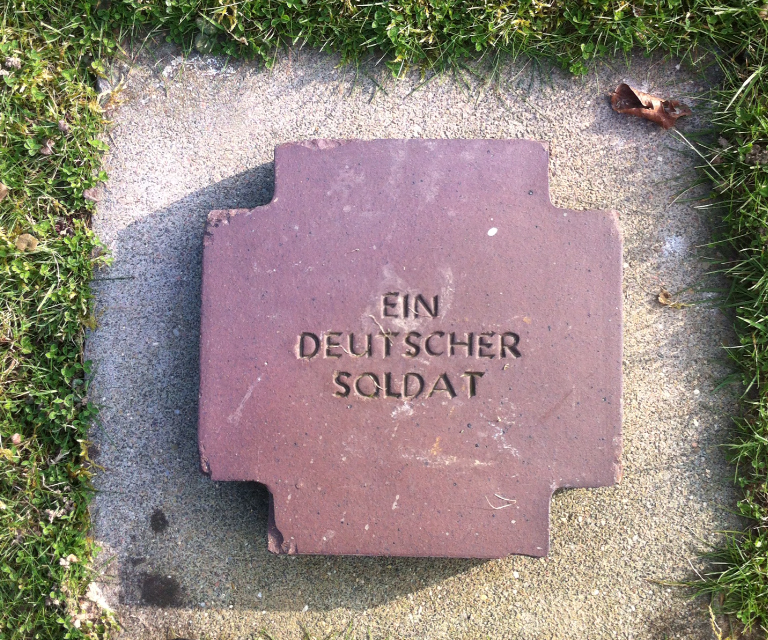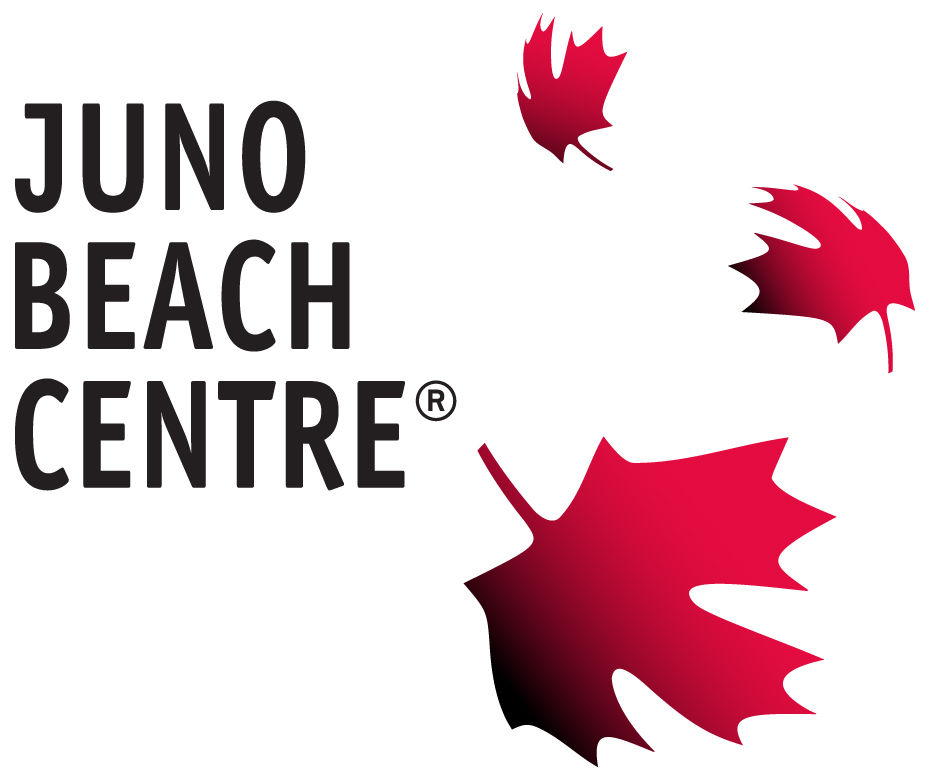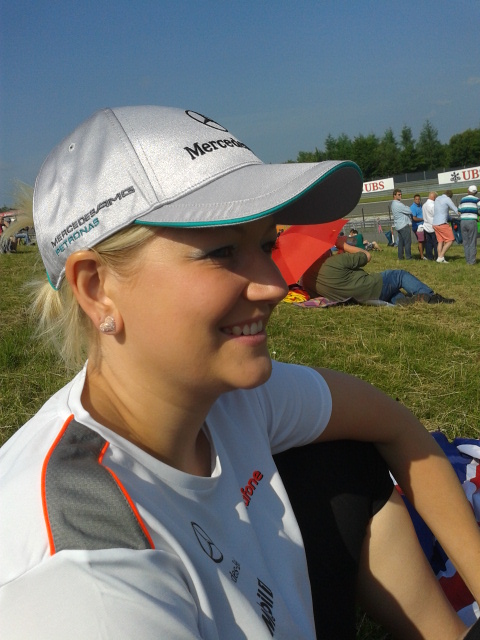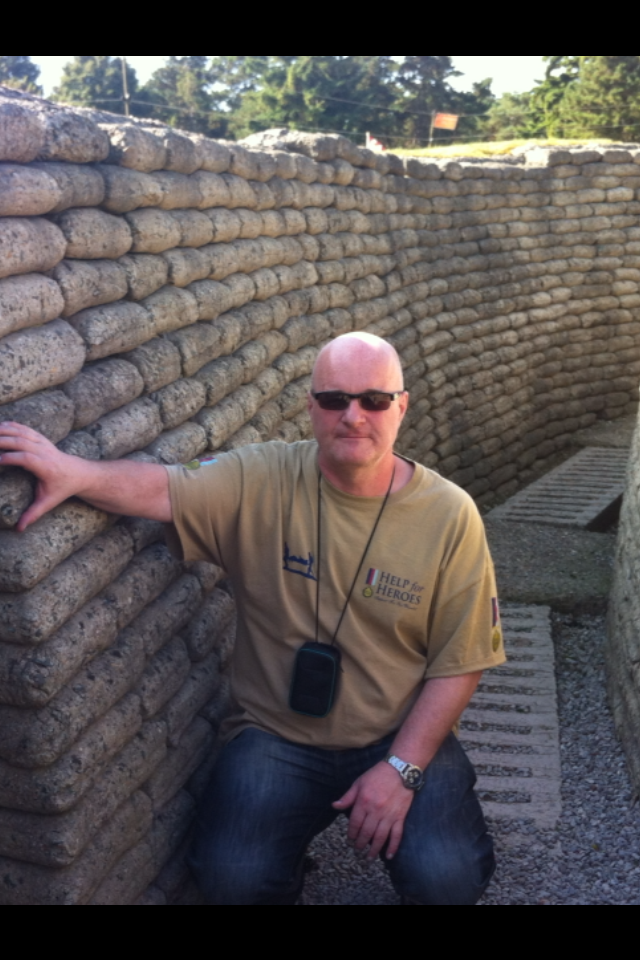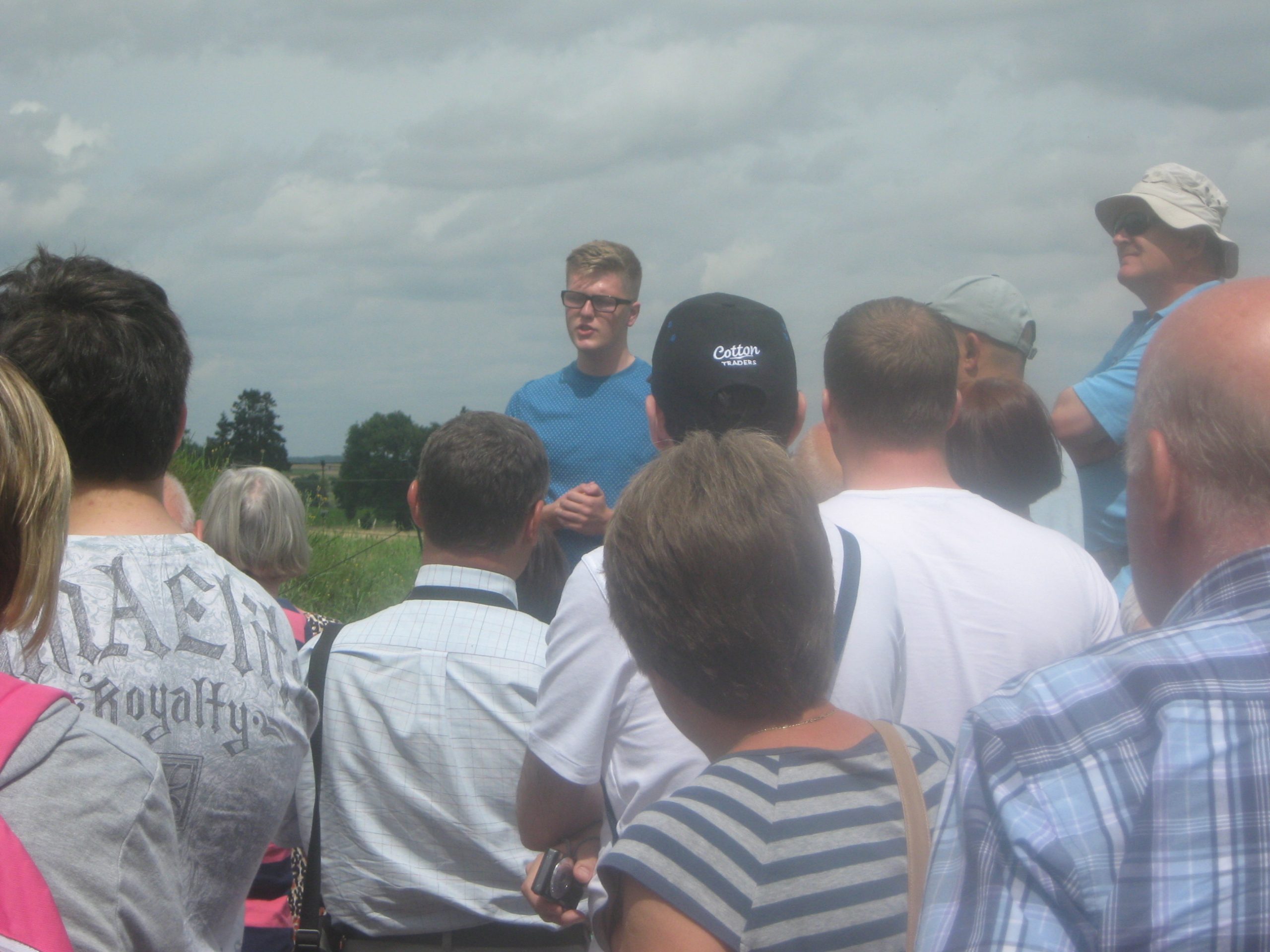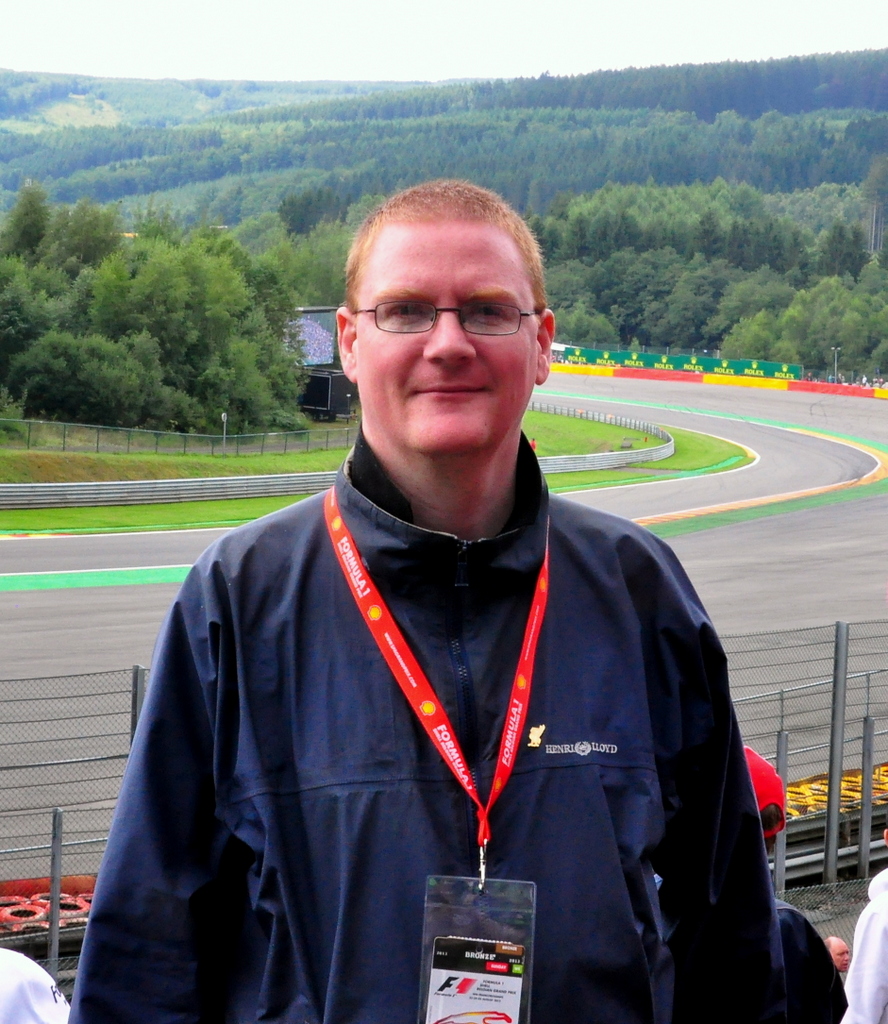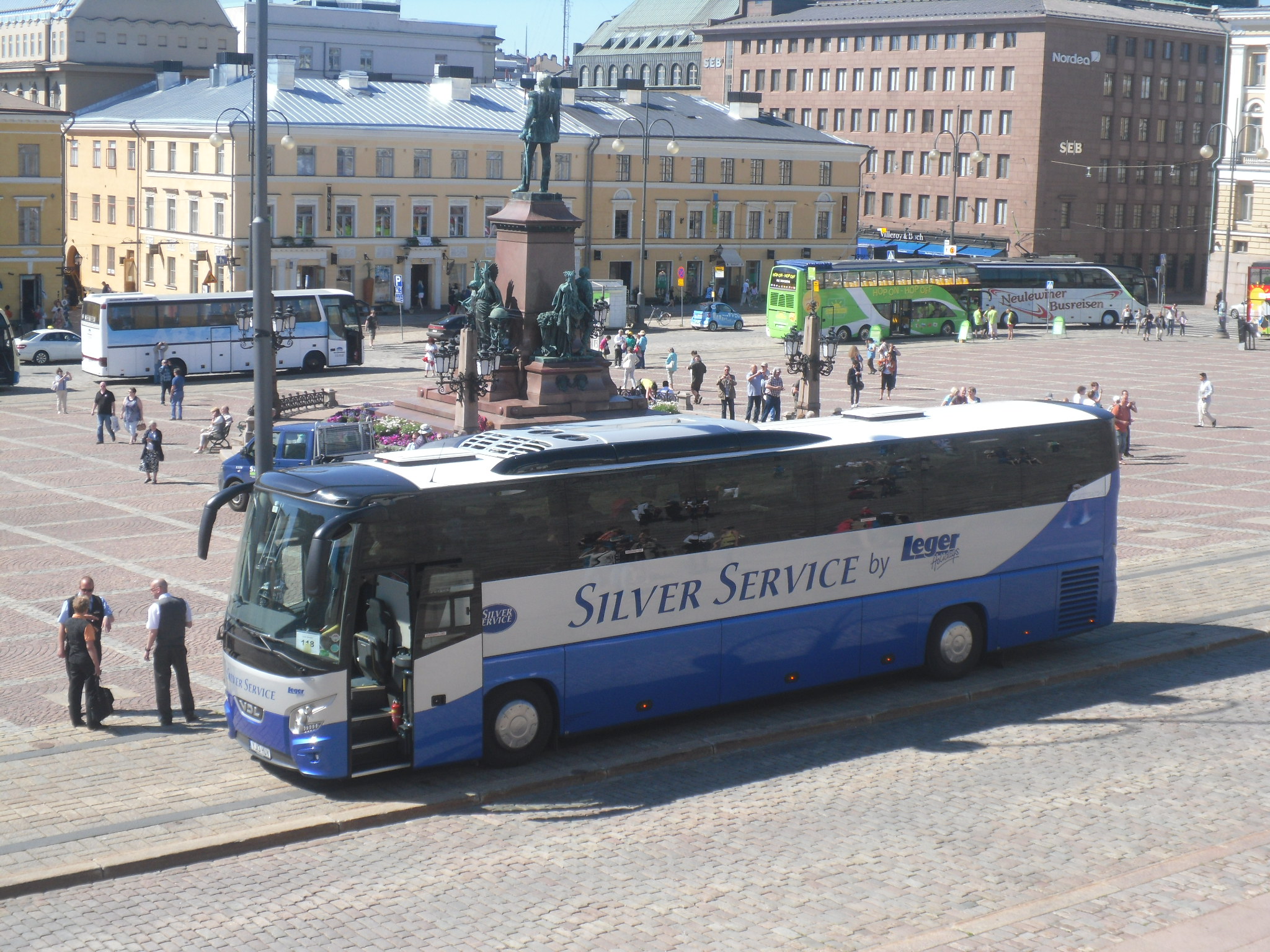Leger Holidays are proud to present our NEW and innovative Luxuria coach.
In 2003 when we first introduced Silver Service we set the standard for added comfort and style when travelling across Europe. Many of you have been asking “What next?”…the answer is Luxuria – the next level in escorted touring travel.
Luxuria takes coach travel to the next level of comfort, it only seats 31 passengers in rows of three, meaning significantly wider seats and extra leg room.
The deluxe armchair-style seats, some with tables, also feature retractable calf rests, fully-interactive personal touch screen TV’s, offering a wide choice of movies, T.V programmes and music so you can watch what you want when you want.
For added comfort there are cup holders along with USB and UK plug charging points. Refreshments are also available on board and porterage is offered at most hotels.

Another standout feature of Luxuria is the selection of double and single seats, including four seats face to face with tables. On each row there are just three seats rather than the usual four, meaning each armchair-style luxury seat is wider and with more personal space around it for a more comfortable journey. And with up to 7 single seats available, these are likely to be very popular with single travellers and those who enjoy their own personal space.
For more information regarding the new service and the tours Luxuria will feature on please visit our dedicated website page here.
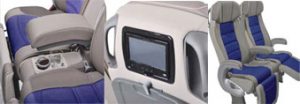
Málaga: A Cultural Haven in Southern Europe
The first time I visited the capital of the south coast of Spain, Málaga, some 15 years ago, cultural enrichment wasn’t exactly on my mind. I’ll admit it; I did like many expats in this region and followed my heart (or my Andalusian boyfriend, in this case). The love affair didn’t last very long, but little did I know that it would lead to a far deeper and longer-lasting relationship with what has come to be the city of my dreams.
Most fist-time visitors to Málaga (or those who first move here) tend to spend endless weeks on the beach, toasting their skin to golden perfection and enjoying Málaga’s most famous delicacy: coal-barbecued sardines on a spit, cooked in a fire built in little wooden boats, which grace most of Málaga’s famed frontline restaurants, called chiringuitos. When it comes to chiringuitos, of course, the word ‘restaurant’ doesn’t quite fit; most are informal, meant to be frequented by sand-strewn holidaymakers. Chiringuitos are built on wooden decks, under thatched roofing, a few steps away from the beach. They are the perfect reason to stay seaside all day; whenever one feels parched or hungry, a cool sangria and plate of paella are just a stone’s throw away.
As one matures and the fear of skin cancer takes hold, , priorities begin to change. As what in our mind has always been a sleepy seaside tourist town becomes the place we live, work and build our family in, we seek a more profound connection to its natural landscape, history and culture. In many ways, my decision to live and make my life in Málaga in 1996 coincided with the transformation of this coastal capital into an impressive cultural hub.
If you are a traveller who likes to combine the very best of Nature, culture and shopping, Málaga is an ideal choice. This is a mountainous city, offering keen trekkers and mountain bikers alike a vertiginous experience. The mountains can be enjoyed by children, too; in Benalmádena, a 10-minute drive away from the capital, there is a fun cable car experience that takes you to the summit of one of the most expansive mountain ranges in the area. From above, you can view the beauty of the coastline and enjoy an amazing falconry show featuring wild eagles, hawks and the like. Following your descent, few things could be better than heading for the beach and enjoying a hearty lunch.
One of the best things about the South of Spain is how far your dollar or pound goes here. Many venues offer a three-course meal (including a glass of wine) for under £8, though if you’re after a gourmet experience, you should probably head for Marbella – 30-minute car ride from Málaga, Marbella is a famed destination for high-end residential tourism and it boasts everything the discerning travel could demand, including gourmet restaurants. For a true taste sensation, try two-Michelin-starred Chef, Dani GarcÃa’s new restaurants at the Puente Romano Hotel. The first of these, Dani GarcÃa Restaurant, offers an amazing tasting menu inspired on the world of fairytales. The second, Bibo, is a haven of gourmet tapas whipped up with revolutionary techniques, including the use of liquid nitrogen to ‘freeze’ sorbets that melt ever so slowly in the mouth. Marbella has its own Rodeo Drive on the luxurious port of Puerto Banús, with stores such as Louis Vuitton and Jimmy Choo attracting affluent shoppers from around the world. Budget travellers need not fear spending more than they can afford, however; if one’s focus is cultural rather than material, there are many museums and galleries to keep you occupied. Let’s whiz back to the city centre of Málaga, where you will find these treasures:
- The Málaga Car Museum: Launched in 2010, this museum is dedicated to art on wheels: keen motorists will find over 90 classic cars, hailing from the collection of avid car buff, Joao Manuel Magalhaes. www.museoautomovilmalaga.com
- The Carmen Thyssen Museum: Famed art collector, the Baroness Carmen Thyssen, ceded an extensive part of her impressive collection of 19th century Andalusian themed to the province of Málaga, to enable the opening of the Carmen Thyssen Museum. This is a great museum to visit in under an hour, since the collection is presented in such a way that it is very easy to appreciate the stylistic and thematic development of art in the 19th century. Early works are highly stylised at first, then progress into a more realistic style. Finally, the focus of the paintings is more on cosmopolitan subjects rather than regional ones. www.carmenthyssenmalaga.org/en
- The Glass and Crystal Museum: If you have just one day to visit a museum, let it be this one. Housed in an old Andalusian mansion in the very heart of the city, it contains the private collection of Cambridge scholar, Dr. Gonzalo Fernandez Prieto, who gives tours of his extensive collection in both English and Spanish. There are over 3,000 pieces to wow at, though what really makes the visit special is Fernandez Prieto’s wit and sheer passion for glass and crystal. Discover delightful historical facts, anecdotes and information about the ancient art of glass and crystal design and manufacture. www.museovidrioycristalmalaga.com/
- The Contemporary Art Centre: This museum is one of the most impressive in terms of size, since it contains a vast number of artworks from the 20th and 21st centuries and has housed exhibitions by some of the world’s most renowned artists, including Louise Bourgeois or Ron Mueck. www.cacmalaga.org
- The Picasso Museum of Málaga: Picasso is arguably Málaga’s famous son (alongside Antonio Banderas). View over 230 of the artist’s works, donated by his family. www.museopicassomalaga.org
- Last but not least, do pay a visit to the Cervantes Theatre, 19th century jewel which offers fantastic opera, dance and music performances. www.teatrocervantes.com. If you are travelling with kids, take them to a theatrical performance at the Teatro Echegaray. www.teatroechegaray.com
This post was written by Susie Collins
A battlefields tour and a journey to a 'free Europe'
Paul Prendergast shares his experience of the D-Day Landings in Normandy tour, his second Battlefields tour with Leger.
DAY 1
The first day of our Battlefields tour started with a noon pick up at Pease Pottage service station. It was a smooth journey down to Dover where we had the changeover onto our coach onward to the Battlefields of Normandy. Whilst at Dover I had the chance to have a quick chat with Paul Reed, the Leger Head Battlefields Guide – this man is without a doubt a great Military Historian and his knowledge is boundless. It was a real pleasure to meet him and shake his hand. We arrived in Calais with no problems. On the four-hour drive to the beaches of D-Day the journey was quick and pleasant and Mark and Dave – our drivers – were friendly, smart and willing to help. Our guide for the trip was Bill McQuade. He told us what to expect on each day of the tour. Again, his military knowledge was boundless and he answered any questions with no problems.
DAY 2
We set off at 08.30am to Pegasus Bridge. It was great to actually walk on the bridge – just to think, this was the point that the heroes started to fight to free Europe and get back the freedom to the people of France. We also went to visit the Gondrée Café which was the first place to be liberated in France. I found it quite remarkable that a small band of men risked so much on this bridge. We stopped for lunch at a small café just next to the bridge before going to Sword Beach – Queen’s sector. This is where the British landed. We also stopped to see a statue of a piper who led the soldiers into battle playing – this was at Hermanville which is twinned with Tangmere in West Sussex where a Battle of Brittan RAF squadron was based. We then visited the Juno Sector of the beach which is where the film D–Day was actually made and then went to see a memorial to the 7000 Canadians that landed on the beach, before moving on to the Juno Centre – a fantastic place to look around at pictures and artifacts. I sat in a small cinema with a small group of people from our group and also a group of children from Canada. The film showed actual battlefield dead and casualties, and as we left the cinema I found some of the children crying. I asked if they were OK and one of them told me that it had brought it home to them what really happened. I found it quite touching that children from today realise what these men gave up. We then visited an underground bunker which was in very good condition – it still had the small stove and cots in it. We then went to Mulberry B. We couldn’t see a lot due to the mist on the sea, and can only imagine how it was on 6th June 1944.
DAY 3
Our day began with a very misty drive down to Bloody Omaha, the American sector of the D-Day landings. We started our day at the American War Cemetery at Omaha. I have never visited any other cemeteries apart from the British ones and I didn’t know what to expect. On arrival there were immaculate white headstones as far as the eye could see. Buried in this place are a few people who I would like to mention: Robert A Niland, killed 06/06/44 and Preston Niland, killed 07/06/44 – two brothers killed within a day of each other and on whom the film Saving Private Ryan is based. Also, Theodore Roosevelt Jnr., killed 12/07/44, son of the American President.
Walking around this place bought chills to me and brought home the price that these men paid for my freedom today. Then it was on to the Overlord Museum. This had some fantastic pieces of kit in it to look at close up, ranging from a Panzer Tank to Sherman Tank and personal belongings of British and American soldiers. We then went down onto the actual Omaha Beach. I can’t imagine the mayhem and slaughter the Americans must have gone through on the landing day. I went up a small path which lead to a small German bunker which likely held a machine gun because of the vantage point down on to the beach. We then went to Utah Beach to a fantastic little place where you could have look around and actually see what happened on the day. My favourite part of Utah Beach was when I found a few German bunkers that you could actually go into. We then stopped at a statue of Dick Winters – he was one of the Band of Brothers. We stopped at a tribute to the 101 Airborne Division, otherwise known as Easy Company, made famous by a TV series by Stephen Spielberg.

The last trip of the day was to a German War Cemetery. I didn’t know how I would feel about this because I’ve never visited one before. It contained about 8000 soldiers of all ranks. What was also shown to me by our guide was the grave of Michael Wittmann and his tank crew. He was one of the most daring commanders of his time and he died and was buried with his crew. I walked around the cemetery and noticed no headstone standing upright and the lack of flowers on any graves. I asked Bill, our guide, why this was. He said it was that a ‘Spirit of the Forest’ approach is taken to death in Germany, hence the lack of flowers – only firs and ferns on some graves. In the British cemeteries, any soldier that is not known and buried is marked with the words ‘Known But To God’. Here nothing. All it said was Ein Deutscher Soldat – A German Soldier. I found it simple but quite touching. A very thought-provoking end to the day.
Day 4
We set off on another misty day to visit Jerusalem Cemetery, a very small place with only 48 buried at the cemetery. I found a grave of J Banks DLI who died on the 21st July 1914 aged just 16. How can a child die like that because he wanted to do the right thing for King and Country? We stopped to take some photographs of a memorial to the 49th West Riding Division and then onto the Scottish Corridor and Hill 112 to look at a Cromwell tank. Unfortunately, we couldn’t see much from the top of the hill due to the mist. We stopped off in a town called Falaise for lunch – this town is famous for being the town where William the Conqueror was conceived – before going to Mont Ormel, known as The Polish Battlefield. We also went to a small but fantastic museum which had great artifacts and also a fantastic view of where the German retreat took place. The group’s last stop was at a National French monument which is a tiger tank abandoned by its crew. We had a group photo taken by Bill.
The thoughts on my first Leger WW2 trip? Simply fantastic. Our guide, Bill McQuade’s knowledge was amazing and all our questions were answered. His passion for his subject is simply wonderful. Our drivers, Mark and Dave were safe drivers, always helpful and well turned out. With the 70th anniversary of D-Day fast approaching, I would recommend this trip without a doubt.
This was my second trip with Leger in under six months – my first was All Quiet on the Western Front – and I’ve enjoyed them both. Which one next? Verdun? Fritz? Tommy? Who knows, but whichever one I book, I know it will be great.
New Archeological Excavations – The Juno Beach Centre
New Archeological Excavations At The Juno Beach Centre in Normandy
Planning a visit to Normandy in 2014? Make sure you incorporate a visit to the Juno Beach Centre to explore newly reopened bunkers and tunnels!
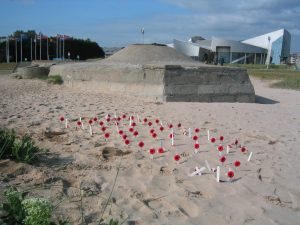
An archaeological dig is currently underway in Juno Park, the area spanning the front of the Juno Beach Centre, which is home to a large stretch of remnants of the German Atlantic Wall fortifications and was a major strong point in the German defence zone between 1942 and 1944. It is estimated that over 30 concrete fortifications are buried in the sand between the Centre and the beach. This system of bunkers, tunnels, ammunition stores, and pillboxes shed a light on the German occupation of Normandy and also tell the story of how the allies, mainly the Canadians, were able to push them back from the wall. The physical traces left by the German Occupation, the construction of the Atlantic Wall and the D-Day Landings make up a cultural heritage worth preserving.
The Juno Beach Centre is thrilled to announce that work is now underway to have a section of these fortifications open to the public and integrated into the guided tours of Juno Park in time for the 70th anniversary commemorations of the Battle of Normandy in 2014.
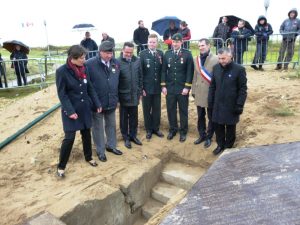
On November 11, 2013, Frédéric Pouille, Mayor of Courseulles-sur-Mer, officially announced the beginning of the works to rehabilitate the underground German Command Post with a groundbreaking ceremony.
It is expected that this work will be completed by April and incorporated into the guided tours of Juno Park. Contact the Juno Beach Centre for more information or visit Leger Holidays Battlefield website to find out which tours include the Juno Beach Centre.
Seen It Live – The German Grand Prix
Zara Thompson, Reservations Supervisor, has worked at Leger for 6 years. Enjoying the races on TV, she wanted to experience the real thing.
My husband and I had our first Grand Prix experience at Hockenheim, Germany in 2012 and had such an amazing time, so decided to go again this year.
Which tour did you go on?
The German Grand Prix 2013 at the Nürburgring.
How did you get there and how long did it take?
We drove to the Holiday Inn at Ashford North the day before and were collected at 1pm by a feeder coach. This was a leisurely start and not too tiring on the first day. The Channel crossing was by ferry from Dover to Calais, during which we had time to relax on board and start to take in the atmosphere of the avid Grand Prix fans all travelling to Germany. We arrived at our hotel around 11pm, which was reasonable for the distance we had travelled to be close to the circuit.
Where did you stay?
We stayed at the 4-star Ramada Hürth-Köln which was in a great location, with places nearby to get our evening meal and only a 1-hour drive from the circuit. After a lovely breakfast, we left the hotel in good time to beat the traffic to get to the Nürburgring.
How does actually seeing it live compare to watching on TV?
It’s such an incredible difference, being at the circuit to watching the race on TV. From the sounds of the roaring engines to the smell of the fuel, you get to feel the intensity of the F1 cars and see just how quick they fly around the track. It’s such a good atmosphere, with all the different supporters of teams, drivers and nationalities. There’s a real sense of camaraderie and mutual respect between each supporter, all together, just there to have a good time and enjoy the race. Before we went, we knew we wouldn’t get to see as much of the race as you do on TV, but the atmosphere more than made up for that. At qualifying, we walked around the circuit to work out the best places to stand to see the race. On the race day we found where we wanted to be and managed to get in front of a screen and saw more or less everything they showed on the TV as well!
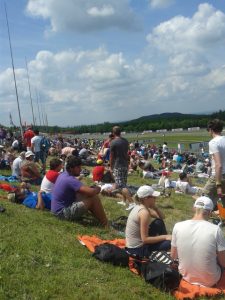
Did you go to watch a certain driver or team?
I will always be patriotic and support McLaren, but this season, I have had to follow my not-so-secret crush: Lewis Hamilton! Kitted out in Mercedes gear with a huge Hamilton flag was a bit daunting in the middle of a crowd of Vettel fans… in Germany! When Lewis got pole position on the Saturday we wanted to discreetly slope away back to the coach… to our surprise, all the German fans were cheering with us and had a few beers with us at the bar!
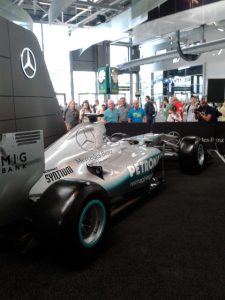
What was the weather like? Did it affect your visit?
As we had this as our main holiday this year, we were really hoping to get some sunshine. The whole weekend was glorious from when we arrived in the morning until after the race ended in the late afternoon. It made the experience more enjoyable and worthwhile, rather being in rainy Silverstone back in the UK!
Please sum up your tour in five words?
Atmospheric, surprising, experience, thrilling, loud!
Would you do a Grand Prix tour again?
Definitely! Nürburgring was top of the list, but I’d love to go to the Belgium Grand Prix and The Monaco Grand Prix.
Discover the latest Grand Prix and F1 holidays here.
Are you the UK’s biggest Christmas Scrooge?
Free holiday on offer for the UK’s biggest Scrooge
Are you the UK’s biggest Christmas Scrooge or does the thought of festive feelings bring you out in a rash? If so, you could be in for a treat with a twist this yuletide season!
We’re offering the nation’s biggest scrooge, and a friend of their choice, a free seat on one of our most popular Christmas Market tours in the hope of overcoming any Grinch-like ways they may have.
To enter yourself, or nominate a loved one, all you need to do is send us a 300 word explanation of what makes you (or the entrant) the UK’s biggest Scrooge along with a photo of the person nominated. Entries should be sent to losethescrooge@lucre.co.uk by the 25th of November 2013 at which point your entry will be put forward to the panel.
The lucky winner, who will be notified by the Leger team by the 27th November, must be available to travel on the 12th December 2013. Collected from one of a selection of pick up points, the winner and a companion of their choice will travel on a luxurious Silver Service coach to visit Brussels Christmas Markets and Valkenburg for a spectacular four day tour. Their Christmas spirit levels will of course be measured both before and after their return.
Huw Williams, Marketing Director for Leger Holidays said:
“The European markets offer unbeatable festive atmospheres which are sure to melt even in the frostiest of characters. Over the years, we’ve had so many customers come back from the tours claiming to have found a new sense of Christmas spirit that we just had to put this to the test and see how powerful the sights, sounds and smells of these markets can be!
“Of course, everyone is entitled to embrace their inner scrooge should they want to. However, through this competition, we wanted to provide an opportunity for those who are more curious about exploring their hidden Christmassy side. We look forward to reading through the entries and we wish everyone the best of luck!â€
Looking to enter or nominate someone you know? Make sure you’ve read our terms and conditions…
Terms and Conditions:
- The promoter is Leger Holidays Ltd. Sunway House, Canklow Meadows, Rotherham S60 2XR.
- The ‘Lose The Scrooge’ competition is open to all UK residents over 21 years old (including Northern Ireland, Eire and the Channel Islands) except for employees of the promoter, their immediate family and anyone else connected to the creation or administration of the promotion.
- The prize offered is non-transferable and is for one adult (over 21) and a travelling companion of their choice.
- The entry materials must belong to, or have had approval from, the entrant.
- The entry period is from 12th November 2013 until midnight on 25th November 2013.
- The overall winner will be announced by the 27th November 2013.
- The overall winner will receive two free seats on Leger Holidays’ Silver Service, four day tour ‘Brussels Christmas Markets and Valkenburg’. The tour includes three nights’ accommodation with continental breakfast (with the two travelers sharing a room one of whom must be over 21).
- No cash alternative is available and the tour must be taken on the 12th December 2013 as started, unless Leger Holidays announce otherwise.
- Please check at time of booking exact dates and times of travel, as missed departure will void the prize.
- Travel insurance is excluded. Winner should take out their own insurance.
- Entrants will be given a choice of collection points for the tour from a limited selection of areas presented by Leger Holidays. Travel costs to these points will not be covered by Leger Holidays.
- In the event of unforeseen circumstances, the promoter reserves the right to offer an alternative prize of equal or greater value.
- The judging panel’s decision is final and binding. No correspondence will be entered into.
- By entering this competition, entrants and any persons featured in the entry photograph agree that their nominations may be used by Leger Holidays as they wish, without prior notice to the entrant. Entrants will also have permission of all individuals in the photograph, as well as the permission of the copyright owner of the photograph, before entering the contest.
- Winners’ names and counties are available 28 days after the closing date. Send a SAE to Leger Holidays c/o Lucre, 30 Park Square West, Leeds, LS1 2PF.
- By entering the competition, entrants agree that their nominations and photographs/text/content will be posted on Leger’s social and media channels including the Leger Holidays website and blog.
- By entering the competition, the winner agrees to participate in any publicity involving print and broadcast media that is required.
- All text copy provided in this competition remains the copyright of Leger Holidays Ltd.
- By entering the competition, entrants agree to be bound by these rules and by any other requirements set out in the promotional material.
- Any inappropriate or offensive material will be reported to the police and removed from the competition.
- Leger Holidays may in its absolute discretion change these terms and conditions without notice or cancel the promotion without prior notice in the event of circumstances arising beyond its control that makes it necessary to do so. By entering this competition entrants are deemed to accept these rules.
A Thought Provoking Trip for Paul Prendergast
Paul Prendergast had a couple of very special reasons for joining Leger’s 5-day All Quiet on the Western Front tour.
My interest in WW1 goes back a few years and was kicked off again by some research that I started at work.
I work for Royal Mail in Stockwell London SW9 where I am a Delivery Office Manager. Every office has a plaque dedicated to the dead of both wars. The plaque above my office has 6 names on it (I’ll come back to this later).
On the morning of our tour, we were met at Peace Pottage by our feeder coach and then travelled to Dover where we all boarded the ferry to head to Calais. On arrival in France we changed to our tour coach where we met Andy and Barbara who were our drivers/hosts on the Silver Service coach. We also met Iain McHenry, our Specialist Battlefield Guide who spoke about our tour.
Day 2
We set off at 09.00am to Tyne Cot Cemetery, where the graves of 12,000 men are buried and remembered. It makes you realise how senseless war is when you see that. I’m a member of the Victoria Cross Trust, and I also got to see the graves of three Victoria Cross holders.
We also visited then Sanctuary Wood and some trenches that have been preserved by the owner, and on arrival we heard a guy playing the bagpipes.
We then went onto Hooge Crater and Cemetery. The place was kept in beautiful condition by the CWGC, and I also found another VC grave.
After lunch we headed towards the Messines Ridge and we stopped at the Ulster Peace Tower, where our guide pointed out the German Front lines and spoke about the famous Christmas Day truce. He also pointed out that past the tower, a house/farm still has 50,000 tonnes of explosive under it!
We then stopped at another cemetery where there was a Jewish grave. I placed a stone on top the headstone – this is Jewish custom and there was no stone on there. This was the least I could do.
The final and most moving part of the day was the Menin Gate Last Post Ceremony. On the Menin Gate are the names of 55,000 men killed or missing. I was nearly in tears when I saw this monument to the people who gave their lives for our freedom. On the wall I found the names of the people from The Post Office Rifles… this is where the story about my reason for going unfolds. I placed a small cross of remembrance there for the six men killed from my workplace.
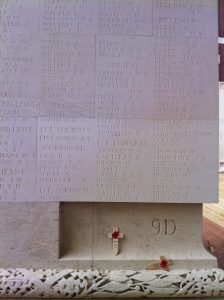
Day 3
This was going to be a day of very mixed emotions for me. When we were on the way to Wellington Quarry it gave you a real idea of the people who lived, slept, ate and dug themselves into no man’s land.
We then went to Arras. There is a wall with the names of 36,000 men missing or killed in action there, and this is when it became very personal for me. The reason for this is that there was a name on the wall: rifleman John Williams 371151, died 16/06/17 2/, Post Office Rifles LONDON 2/8 BTN. Postman, Stockwell Delivery Office… The place where I now work.
I placed a cross of remembrance on the wall.
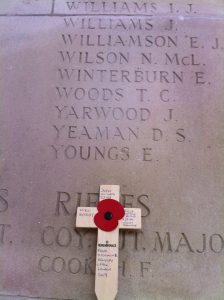
While sitting there, trying to imagine what he went through, a thought crossed my mind. All I could think was how honoured I am that I could say to him: “We have not forgottenâ€. I felt a mixture of pride – that I now work where he worked; honour – placing a cross by his name; and sorrow – knowing that his family could not bury him.
It was a very thought-provoking day for me.
Day 4
We had a long drive to La Boisselle, which is the biggest man-made crater on the Western Front. It was made by placing tonnes of explosive under the German front lines, then exploding them all at once. You cannot imagine what the scene of carnage must have been when this happened.
Our last visit of the day was to the Thiepval Memorial. It is the biggest memorial, with the names of 77,000 men missing or killed. I was looking for one: Sgt George Ryder 2512, died 07/10/13, Post Office Rifles LONDON 1/8 BT. He is the second of the two men that I traced, and the reason for my trip to the Western Front. Sgt George Ryder died 97 years ago on the week of my visit, so to finish the tour in this way, and by placing a cross by his name on the panel, again I can only feel proud. I just wish that, in some way or another, these people who fought for us could see that we still care about what they did for us 100 years ago.
The All Quiet on the Western Front five-day tour is the best way to see all the sites, and the guide, Iain McHenry was first-class. He helped me to find the names of the people that I came to remember on the walls, and also pointed out the VC winners to me. His knowledge of the subject was tremendous. The coach staff, Andy and Barbara were polite and very friendly throughout.
I will be going back – not just yet, but I still have four more names to find.
A battlefield guide in the making – Conor Reeves
A battlefield guide in the making
When 15-year old budding World War historian Conor Reeves, from Cheshire, first came on a Leger battlefield tour, little did he know where it would lead.
After taking the Old Front Lines tour, he contacted his battlefield guide to thank them for the experience and to ask if there was any possibility he could do some work experience on a future tour. Fully expecting a polite ‘no’, he was amazed when Leger’s head battlefield guide, Paul Reed, got in touch to make it happen. So in July 2013, Conor took the ‘All Quiet on the Western Front’ tour – but this time as a trainee guide, presenting some of his extraordinary knowledge about the topic to other guests on the tour. Here he explains the experience in his own words:
On the 26th of July, I embarked upon my journey to the First World War battlefields of Northern France and Flanders. I had travelled with Leger on three previous occasions and, consequently, knew what to expect. This time, however, my experience would differ because I would be aiding the Battlefield Guide.
After weeks of planning and preparation, I arrived at the hotel to be greeted by the specialist guide. We discussed how the weekend would work and which ‘presentations’ I would perform.
The 27th of July saw our group head out onto the Ypres Salient, in Belgium. After visiting the recreated trenches and museum at Sanctuary Wood in the middle of an electric storm, we were bound for Tyne Cot British Cemetery. The largest British and Commonwealth war cemetery in the world, with around 12,000 burials, Tyne Cot always captures hearts and minds of visitors; whether they are first timers or regulars. This would be the setting, and what a spectacular setting it was, for my first presentation. I decided to set the scene and put the cemeteries into context with a brief overview of common traits and a brief history of Common Wealth War Grave cemeteries as, for many, it was their first time visiting the battlefields. This was a leap of faith on my part as I had to judge to what depth of detail I should go into and how much people already knew. Although, at first, my presentation started a little quietly, I started to pick up techniques from our guide. I tried to amalgamate a selection of different techniques like facts, opinions and anecdotes.
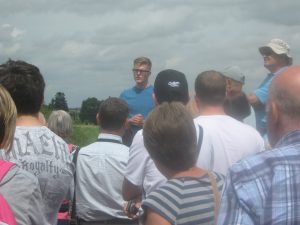
People were soon asking questions and it was a pleasure to able to answer them; it was a thoroughly enriching experience to help people understand and enjoy the trip. Although the battlefields have a certain pull factor, insisting that many visitors return time after time, for many it would be the first and only time on the old frontlines. The thought that I was helping to forge the only memories of visiting the battlefields on which their relatives probably fought and died, really is priceless. I choose the word “is†with some conviction because it still makes me feel proud and very grateful, even to this day.
Later that day, I presented some information at the Ploegsteert Memorial, with subjects including the story of a posthumous Victoria Cross winner and a former England Rugby captain. With my confidence improving, I was receiving lots of positive feedback which would stand me in good stead and give me great amount of encouragement for our time on the Somme, the following day.
The Somme holds a very special place within the consciousness of the British nation because of its apparent embodiment of the horrors associated with the First World War.
Feeling more at home, where I one day wish to reside, I was much more confident on the battlefields of the Somme, doing presentations at La Boisselle and Beaumont-Hamel. Presenting the events of 1916 to some of the descendants of the victims of this most gargantuan of battles was an absolute dream come true. A dream which I sometimes doubted would ever come to fruition, but which has done so before my 16th year. My dream, however, would not have been achievable if the opportunity had not been provided by Leger and its guides. To talk about the disastrous first day of the battle of the Somme was an honour and a privilege; something I will forever look fondly upon, to be able to share the stories of heroism and blunder and bear witness to the sacrifices made in the name of the British Empire.
On the Somme, it was a great surprise to be met by Paul Reed; the head Leger battlefield guide. I have previously met Paul a couple of times and he arranged my work experience, so I thought it was very nice of him to take time out of his holiday to see how I was getting on. Paul has continued to support me throughout my development and education into The Great War and is always willing to give me support and advice. He inquired as to how I was finding the experience and I gleefully explained what I had done and how brilliant I was finding it all. I even got him to sign my copy of his book “Walking the Somme”. Although I could have chatted to Paul all day, the tour beckoned and I had to adhere to battlefield guide rule number one; the customer is your number one priority – another moral I learnt as a result of my time spent with the great staff at Leger holidays!
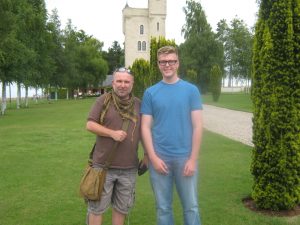
We finished the day at the Thiepval memorial to the missing of the Somme. An appropriate ending to the day, putting the size of the battle into context with its 72,000 names, each one “denied the known and honoured burial†given to their comrades.
Earlier in the day, I had agreed to help a lady find her Grandfather on the memorial. One, amongst the endless names. To aid her in finding the relative’s name, which was the sole purpose of her pilgrimage, was an experience that I will never forget.
Aside from the historical and factual information gained from the trip, I gained a great amount of experience in public speaking and presentation which will help greatly in the future. Working with Leger has made me even more set on pursuing a career in military history which I will continue to work towards over the next few years. The ultimate goal at the end of my education is to be able to submerse myself in the history of the Great War and live on the battlefields, permanently, working for a company like Leger.
Until then!
Conor Reeves
Belgium Grand Prix with Leger Holidays – Neil Martin
Neil Martin (Daily Star) – Belgium Grand Prix press trip blog post
Many people who go to a Formula One event for the first time talk about the noise – but no-one ever seems to mention the deep rumble you actually feel in your chest.
It was certainly a shock to me at the Spa-Francorchamps circuit in Belgium as the cars came out onto the track for a practice session on Saturday.
Sitting just a few metres away on the bank beside the lightning-fast Kemmel Straight, the roar of the engines can make your whole body rattle.
So God only knows what it must feel like to strap yourself into the cockpit of one of those amazing machines, basically rockets with wheels, and blast down the track at more than 200mph.
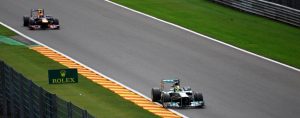
I’m not an obsessed F1 fanatic, but will watch the Grands Prix on television on a Sunday afternoon and follow who is doing well.
I was always interested, though, in knowing what it might be like to get up close to the action – and Leger’s three-night trip from the UK gave me the opportunity.
Spa is certainly a great place to experience everything that top-level motor racing has to offer.
Make sure you bring your hiking boots, though, as the circuit is nearly 4.5 miles long and extremely hilly as it winds its way through the Ardennes forest.
You’ll discover that immediately as you walk alongside the famous Eau Rouge corner that climbs steeply to a height of nearly 120 feet, about the size of a 13-storey building.
From there, you can walk all along the Kemmel Straight – the fastest part of the track – where drivers are able to put their foot right to the floor for more than 22 seconds to build up mind-blowing speeds.
At the highest point of Spa, pass through a tunnel underneath the circuit itself and walk downhill to the sweeping Pouhon corner that provides a natural amphitheatre for spectators.

From there you can weave your way out through the trees to the remote Stavelot corner, or go back below the track and then uphill again on the elevated pathway that runs parallel to the long Blanchimont section.
That will take you to the Bus-Stop Chicane, where the cars make a dramatic right/left swerve before crossing the finishing line.
And all of that was accessible with the general admission ‘Bronze’ ticket, included for Saturday and Sunday as part of the trip.
Best to wander around and see it all on Saturday, though, when the crowds are not quite as dense as they are for Sunday’s big race-day.
That’s when the real hardcore F1 petrol-heads get up bright and early to bag the very best spots to watch the action, getting their places by 6am as soon as the gates open.
And they come from far and wide with French mixing with Finns, Germans chatting to Spaniards and English alongside Italians – all cheering on their favourites when the race begins.
From our hotel in Antwerp we were coached the 100-mile journey down to Spa each day, arriving at around 10am.
Having walked around most of the circuit on Saturday and identified our favourite corners, it was heads down and straight to the location (Pouhon) on Sunday before luckily finding a few spare square feet of space to squeeze into.
Those who prefer to be a bit more civilised can upgrade to Silver/Gold tickets which guarantee a specific seat in a grandstand – and also offers the additional benefit of shelter from any rain which famously develops out of nothing around Ardennes.
On this occasion the wet stuff, which can really spice up the race as drivers battle to keep their cars on the track, stayed away on Sunday and Sebastian Vettel enjoyed a processional victory.
But that’s the beauty of live sport – you just never know what is going to happen – and being there in person was certainly a much different experience to watching on TV from the comfort of the living room.
For more information on any of our Formula One tours please visit our dedicated Formula One tour page.
Susie's Amazing Grand Explorer Adventure
Susie’s Amazing Grand Explorer Adventure
Sue Clark one of our customers has not long returned from her holiday with Leger Holidays. Read on to see what she thought of her trip with us on our Arctic Circle and the Land of the Midnight Sun Tour.
Which tour did you go on?
I went on the Arctic Circle and the Land of the Midnight Sun 16-day Grand Explorer trip departing June 29th 2013
How did you get there and how long did it take?
Initially by feeder coach in Lincoln, which also was our tour coach, and I undertook the whole tour by coach. During the adventure I also travelled on 10 ferries, which included an overnight one from Stockholm, Sweden to Turku in Finland
As mentioned previously, it was for 16 days, but as someone who travels as she lives, preferring the journey to the destination-it was paced just right.
Where did you stay?
Too numerous to mention and in a variety of accommodation, including a ski chalet.
What was the weather like? Did it affect your visit?
This tour was not about the weather but the experience, but the added bonus was that for the majority of the time it was glorious weather. I witnessed the Midnight Sun in Rovaniemi in full sunshine. The visit to North Cape was cloudy and windy, but very atmospheric. It rained in Tromso but that only added to the beauty of the countryside. Without the rain I would not have experienced the wonderful waterfalls and lush scenery we travelled through.
Which optional excursions did you do?
I booked the guided sightseeing evening tour in Oslo, and what an enlightening tour this was! I was completely unprepared for the visit to the Vigeland Sculpture Park, and as a sculpture spotter I was in raptures. For me, this optional excursion was worth every pound I spent on it!
Conclusion
In the words of one of our drivers, this was an adventure rather than a holiday, and it was an adventure I would not have missed! Throughout the adventure I grew in cultural, spiritual and geographical experience. It was also a very positive experience because I travelled with a lovely group of people and also a couple of great drivers.
This experience has convinced me not only to undertake more Leger Grand Explorer tours, but also to visit Scandinavia, particularly all the capital cities, for longer as I was only able to have ‘tasters’ on this occasion.
Thank you Leger, without whom I would not have been able to have such an amazing Grand Explorer adventure 🙂

